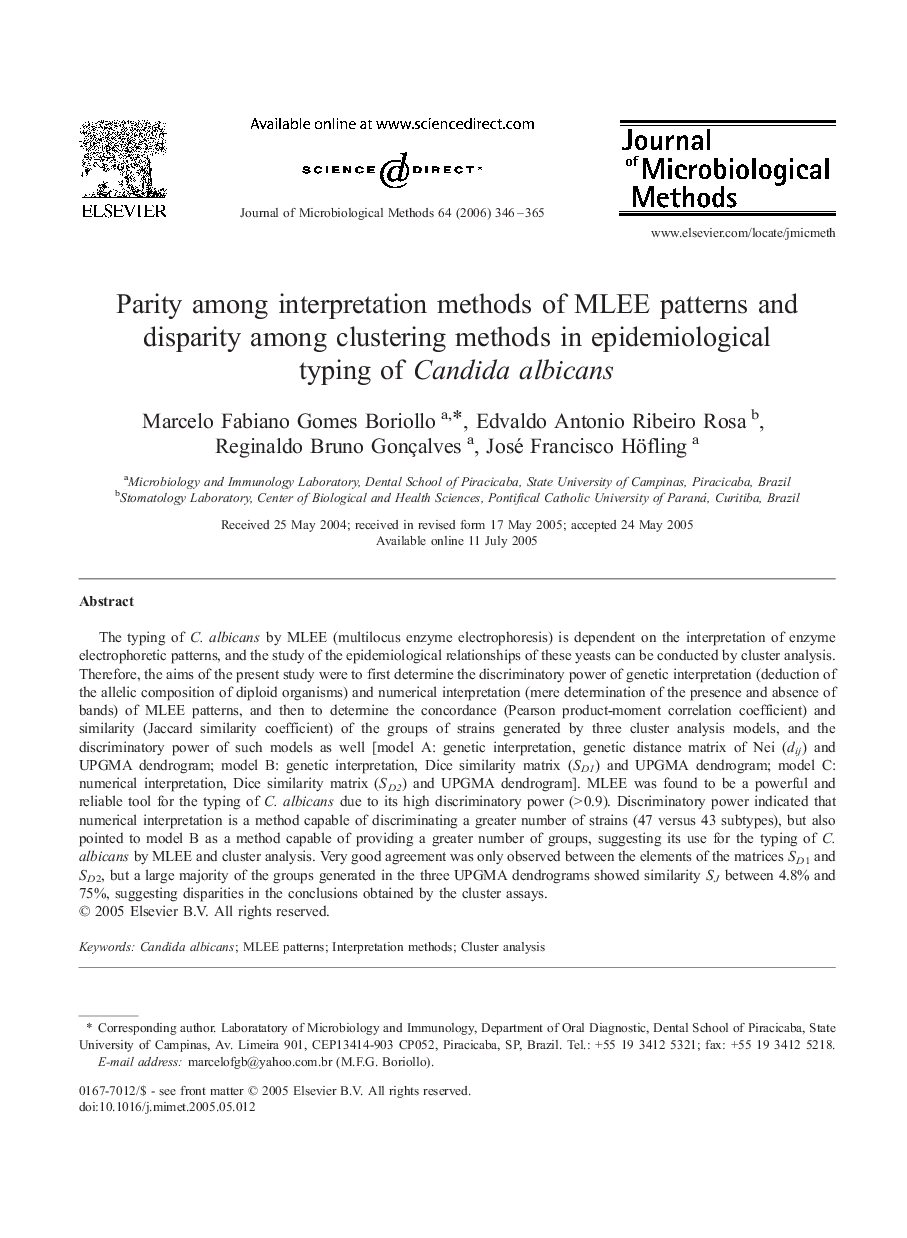| کد مقاله | کد نشریه | سال انتشار | مقاله انگلیسی | نسخه تمام متن |
|---|---|---|---|---|
| 2091351 | 1081542 | 2006 | 20 صفحه PDF | دانلود رایگان |

The typing of C. albicans by MLEE (multilocus enzyme electrophoresis) is dependent on the interpretation of enzyme electrophoretic patterns, and the study of the epidemiological relationships of these yeasts can be conducted by cluster analysis. Therefore, the aims of the present study were to first determine the discriminatory power of genetic interpretation (deduction of the allelic composition of diploid organisms) and numerical interpretation (mere determination of the presence and absence of bands) of MLEE patterns, and then to determine the concordance (Pearson product-moment correlation coefficient) and similarity (Jaccard similarity coefficient) of the groups of strains generated by three cluster analysis models, and the discriminatory power of such models as well [model A: genetic interpretation, genetic distance matrix of Nei (dij) and UPGMA dendrogram; model B: genetic interpretation, Dice similarity matrix (SD1) and UPGMA dendrogram; model C: numerical interpretation, Dice similarity matrix (SD2) and UPGMA dendrogram]. MLEE was found to be a powerful and reliable tool for the typing of C. albicans due to its high discriminatory power (> 0.9). Discriminatory power indicated that numerical interpretation is a method capable of discriminating a greater number of strains (47 versus 43 subtypes), but also pointed to model B as a method capable of providing a greater number of groups, suggesting its use for the typing of C. albicans by MLEE and cluster analysis. Very good agreement was only observed between the elements of the matrices SD1 and SD2, but a large majority of the groups generated in the three UPGMA dendrograms showed similarity SJ between 4.8% and 75%, suggesting disparities in the conclusions obtained by the cluster assays.
Journal: Journal of Microbiological Methods - Volume 64, Issue 3, March 2006, Pages 346–365